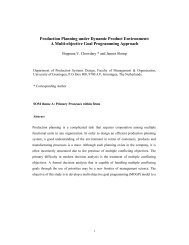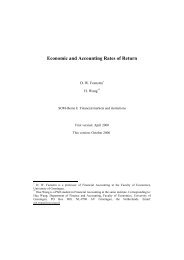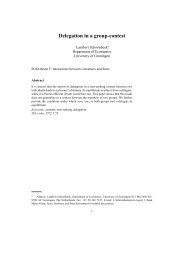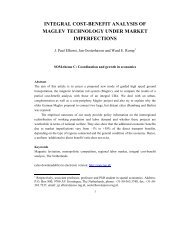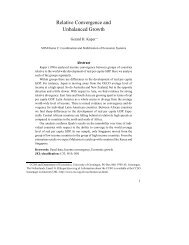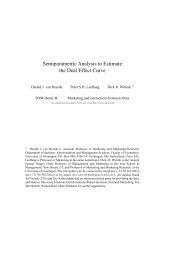Individualism and the cultural roots of management practices
Individualism and the cultural roots of management practices
Individualism and the cultural roots of management practices
Create successful ePaper yourself
Turn your PDF publications into a flip-book with our unique Google optimized e-Paper software.
Next to country-level independent variables, <strong>the</strong> analyses include a set <strong>of</strong> st<strong>and</strong>ard, firm-level<br />
control variables. Some <strong>of</strong> <strong>the</strong> early work using WMS data has found a number <strong>of</strong> firm characteristics to<br />
be important predictors <strong>of</strong> <strong>management</strong> <strong>practices</strong>. We include <strong>the</strong> most important <strong>of</strong> <strong>the</strong>se as controls,<br />
namely firm size <strong>and</strong> firm ownership. We add firm type as a control when applicable. Firm size is a<br />
continuous variable, <strong>and</strong> in our models we include both a linear <strong>and</strong> a quadratic term. The ownership <strong>and</strong><br />
firm-type variables are categorical variables, which we recode into dummies with one category designated<br />
as base category. The WMS also contains data on <strong>the</strong> sector in which <strong>the</strong> firm is active (four-digit SIC),<br />
allowing us to control for sector fixed effects. To ensure that we have a representative number <strong>of</strong><br />
observations per sector, we use a less fine-grained sector definition, recoding <strong>the</strong> original variable to a<br />
two-digit sectoral classification. Firms with missing SICs have been assigned a separate two-digit code<br />
<strong>and</strong> are added to <strong>the</strong> sample. Firms operate in 28 different sectors <strong>and</strong> in 278 unique country sectors,<br />
meaning <strong>the</strong>re are about 17 different sectors in each <strong>of</strong> <strong>the</strong> countries. Table 1 includes descriptive<br />
statistics for <strong>the</strong> firm-level variables. After dropping firms with missing data, <strong>the</strong> main sample comprises<br />
2,955 firms. The enlarged sample, additionally including firms that are not purely domestic (i.e.<br />
multinationals), comprises 5,228 firms.<br />
3.2. Method<br />
The data on <strong>management</strong> <strong>practices</strong> concern firms nested in countries, which means that observations are<br />
clustered, <strong>and</strong> we control for this in our analysis. Controlling for clustering alone is not enough, however,<br />
as <strong>the</strong> hierarchical nature <strong>of</strong> <strong>the</strong> data also means that traditional OLS analysis throws toge<strong>the</strong>r predictors<br />
that operate different levels. To avoid such mix up, we apply a technique that allows us to separate<br />
within-country variation <strong>and</strong> between-country variation <strong>and</strong> estimate models for firm-level variables <strong>and</strong><br />
country-level variables simultaneously.<br />
16



